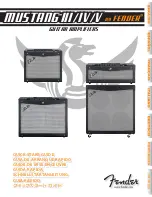
Page 6
Doc No. DCP0000518 JH 12/7/99 rev2
Loop cables
Cable selection
Almost any single core cable (multi-strand
or solid core) can be used for the loop provided it
is of the appropriate impedance. Ideally the DC
impedance of the loop should be 1 Ohm (<0.2
Ohm or >2 Ohm will result in a degradation in
signal). The following table gives some useful
approximations.
Use of a tri-rated cable is recommended.
This is cable with a tougher than usual jacket,
the reason being; damage will occur to the ampli-
fier if at any point the loop is grounded.
Loop cable should ideally be laid at floor
level but in certain circumstances this may not
be possible. Any large amounts of metal (eg
steel meshed reinforced concrete floors) will ab-
sorb some of the signal strength, in this case the
cable may have to be mounted in the walls.
Aluminium (suspended ceilings) being
para-magnetic should also be avoided, mounting
a loop above a aluminium suspended ceiling will
probably result in almost no coverage, turning up
the output of an amplifier would just make mat-
ters worse as it will just stress the output stage
(and minutely warm the aluminium) resulting in a
definite shortening of the life-span of the ampli-
fier.
Recommended cable gauge
PDA500
1.0 -2.5mm
2
PDA1000
2.5 - 5mm
2
Use of cables outside the recommended
gauges may may result in damage to the unit,
or risk of fire.
Optimum cable lengths:
Cable diameter
Optimum lengths
1.0mm
2
30 - 70 metres
1.5mm
2
70 - 100 metres
2.5mm
2
100 - 165 metres
4.0mm
2
165+ metres
Only use cable diameters recommened for each
unit
Speaker positioning
If a speaker is placed near or beside a loop
cable the cross-over in the speaker may pick up
the loop signal, so try to keep speakers and loop
cables as far apart as possible. Normally this
does not show up in use because loop and
speaker have the same programme material,
only where the loop has a different signal to the
speakers (e.g. stage talk back systems)will this
become an issue.
Feeder Cables
When connecting an amplifier to a loop
some distance away use a heavy gauge twisted
pair (4-6mm
2
). This will have a negligible
impedance, as such the amplifier will not drive
against it and the power will be fed into the loop
where it can do useful work. For the cable size of
the actual loop, follow guidelines opposite.
Test loops
We always recommend the laying of a test
loop, there is no such thing as a standard instal-
lation and sometimes only a test loop will uncover
problematic areas.
Feedback
Long lengths of unbalanced signal cable
may cause feedback when placed inside the
loop. This problem can be virtually eliminated by
using balanced signals.
Problems may occur when using standard
dynamic microphones. The coil inside may act
as a receiver and cause feedback. It is advisable
to use condenser microphones. These may re-
quire phantom powering, available on both mi-
crophone inputs.
Other sources of feedback are coils in other
equipment that is linked to the induction loop
system, for example guitar pickups.
Loop cable class
A loop cable is classed as a 2A cable under
IEEE 16
th
Edition wiring regulations. As such it
must be sited a minimum of 600mm away from
telephone, mains and control cables.
Loop cables


























